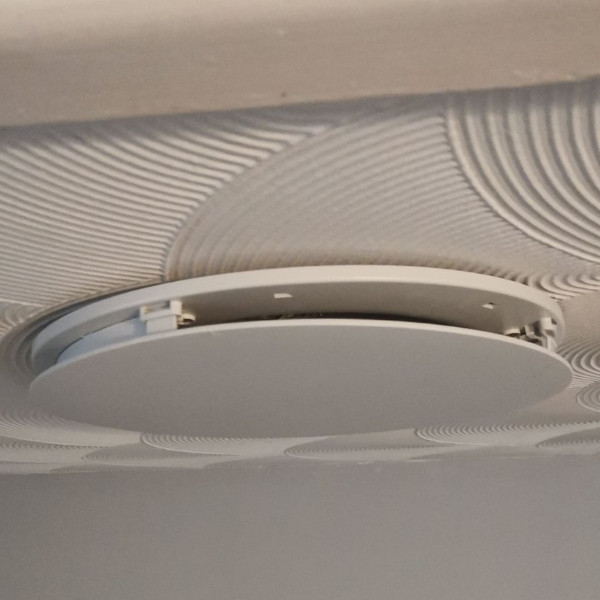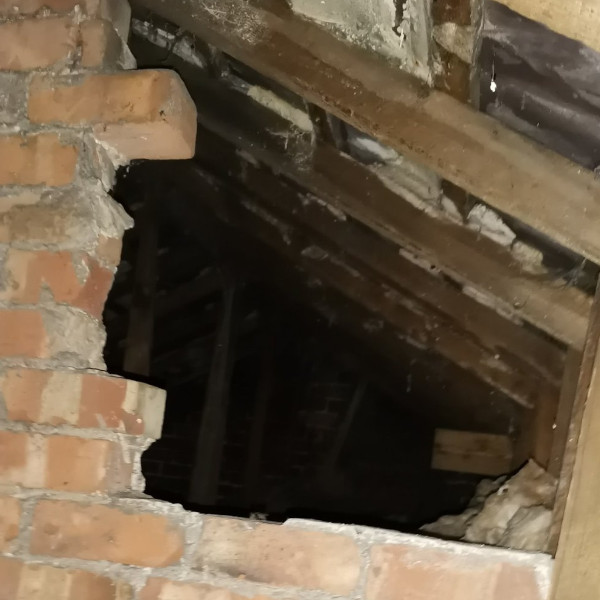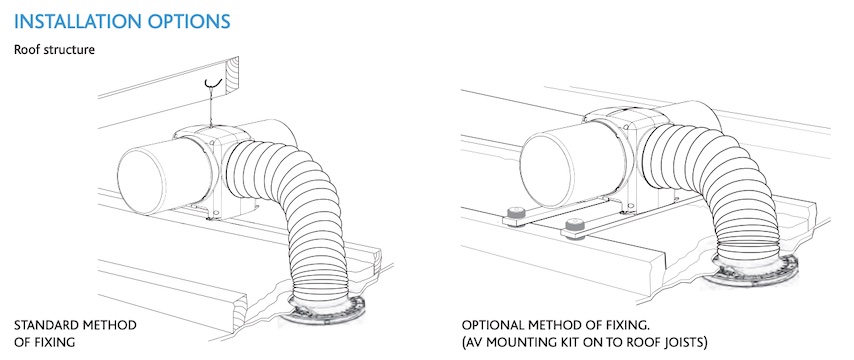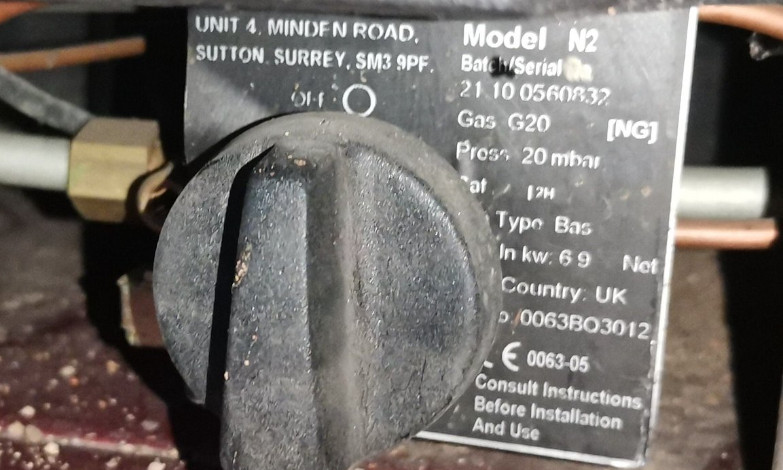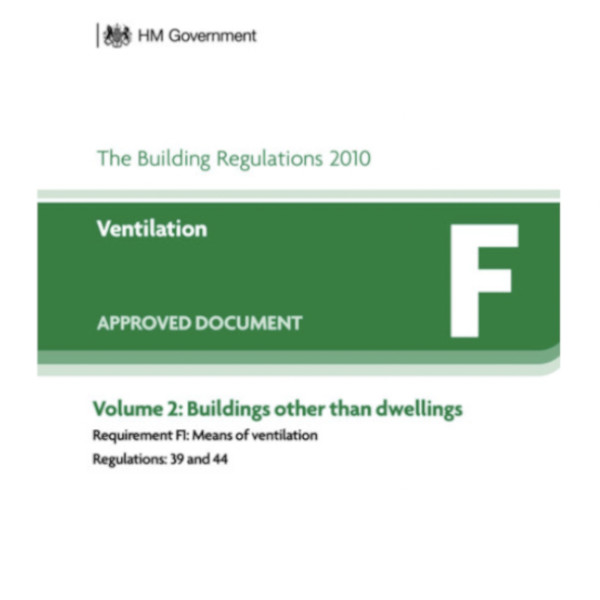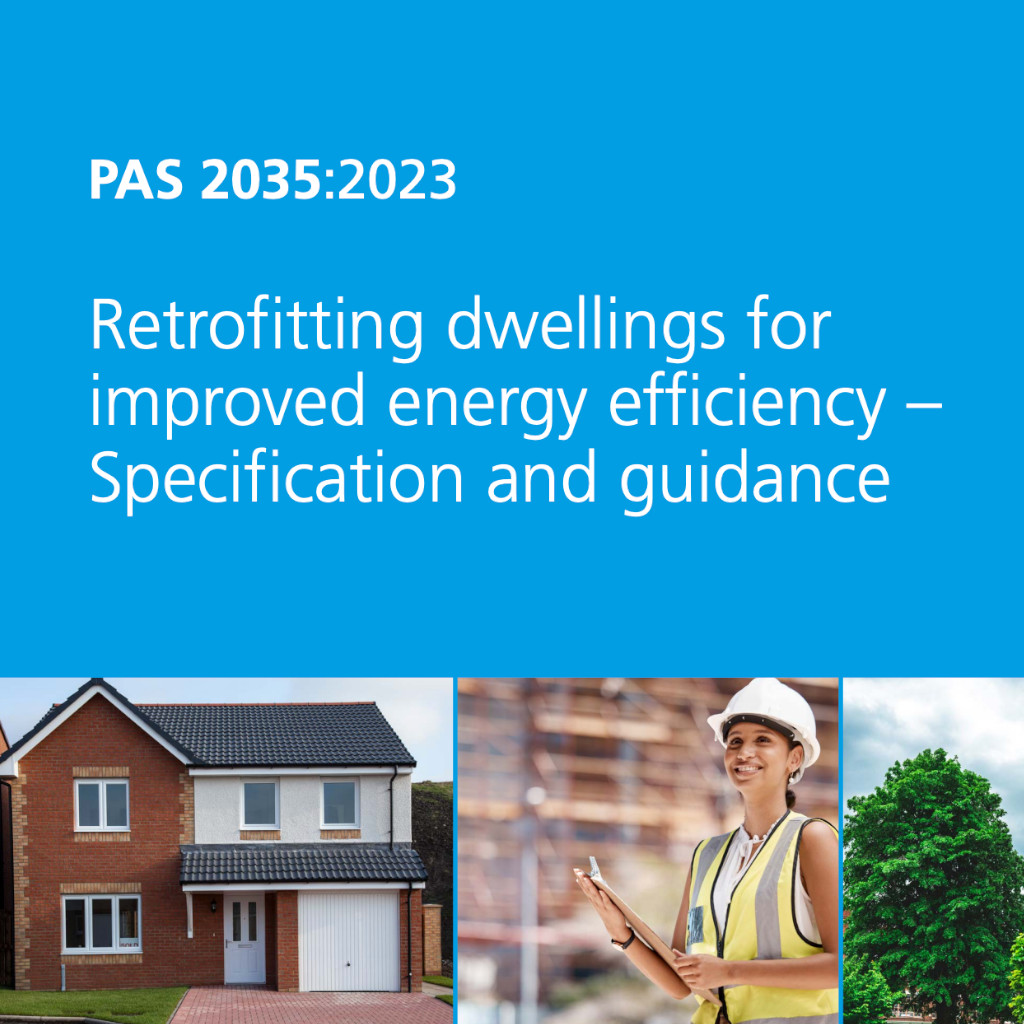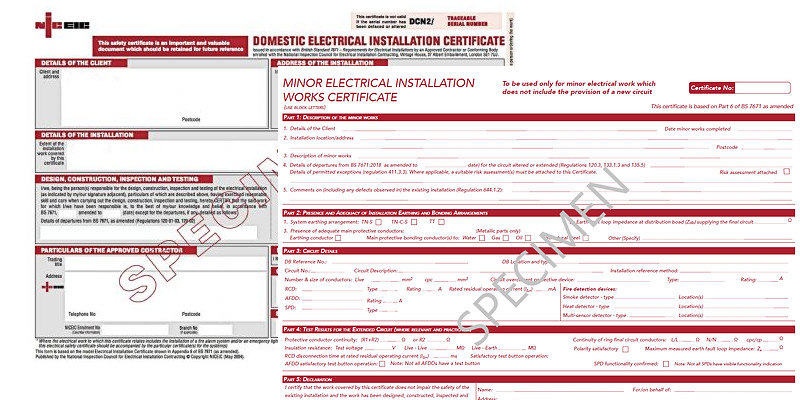What is Positive Input Ventilation?
A Positive Input Ventilation (PIV) system is a home ventilation solution designed to improve indoor air quality by continuously supplying fresh, filtered air into a building.
It works by drawing air from the outside or from the loft space, passing it through a filter, and gently pushing it into the property, typically through ceiling diffusers. Some conditions exist when using positive input ventilation, and it’s always good to check manufacturer’s guidance as well as best practices, especially when adding insulation to the property.
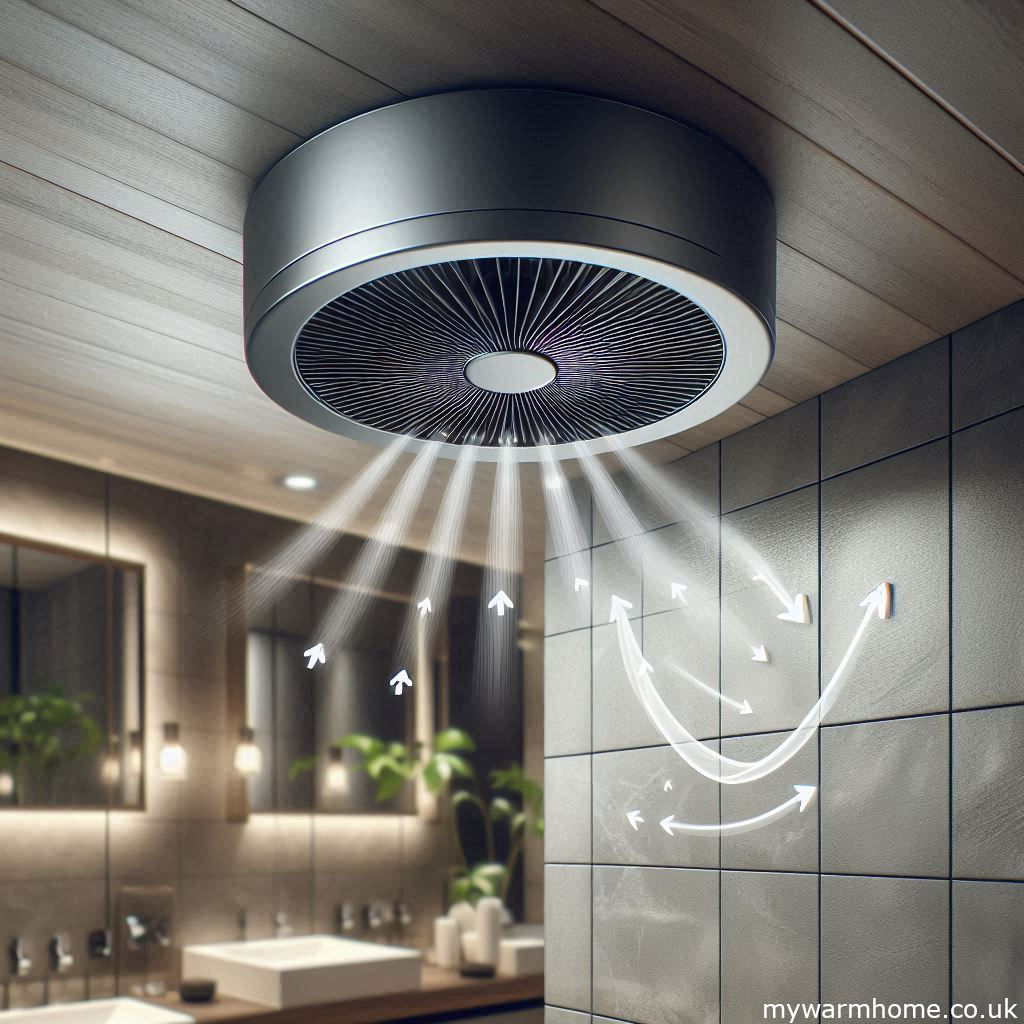

The Pros.
Improved Indoor Air Quality (IAQ). PIV systems effectively replace stale, polluted indoor air with fresh, filtered air, reducing the concentration of indoor pollutants and allergens.
Moisture Control. By introducing drier air into the home, PIV helps reduce condensation and the risk of mold growth, which can protect the building’s structure and inhabitants’ health.
Energy Efficiency. PIV systems are generally energy-efficient, often resulting in lower energy bills compared to other ventilation methods.
Ease of Installation. PIV systems are relatively easy to install and can be retrofitted into existing buildings without extensive modifications.
Low Maintenance. These systems typically require minimal maintenance, primarily involving periodic filter changes.
The Cons.
Initial Cost. The initial installation cost of a PIV system can be higher compared to simpler ventilation solutions.
Aesthetic Impact. Some homeowners may find the presence of a central unit or vents less aesthetically pleasing.
Dependent on External Air Quality. The effectiveness of PIV depends on the quality of the external air, which can be an issue in areas with high pollution levels.
Limited Cooling Effect. While PIV systems improve air quality and reduce humidity, they do not provide significant cooling, which may necessitate additional cooling solutions in warmer climates.
Noise. Some PIV units may produce noise, although this is typically low and can vary between models.
Installation guide.
From June 2022 the building regulations (Part F) introduced a more robust commissioning regime with ventilation. All new mechanical ventilation systems should be commissioned, and a copy of the commissioning report should be left on the premises.
A link to the BEAMA checklist is here. Building control should be notified unless the installers are members of a self certifying competent person scheme (i.e. NAPIT, NICEIC).
If the property that the PIV is installed has high levels of insulation, then trickle vents should be installed to help with removal of stale air. If this is not possible, then dMEV units in wet rooms can help to mitigate any problems.
PIV systems have a filter system and these will need to be inspected and cleaned as manufactures state in the instructions. Some PIV units have a heater element to warm the air as it is pumped in, you should always check functions to make sure they suit your requirements.
If internal wall insulation has been installed, and you are thinking about PIV then it’s always best to check with best practices.
The manufacturer’s installation instructions must be followed completely. Failure to do so may lead to poor performance and pose risks to both occupants and the structure. It may also void the manufacturer’s warranty and release them from liability. The following installation guidance is supplementary to the manufacturer’s instructions.
In case of conflict, the manufacturer’s instructions should take priority. Any PIV unit should only be installed by qualified and competent personnel, following all regulatory requirements. The PCA (Property Care Association), has great information on their website. Here.
PIV cannot be referenced in the current building regulations but will need to be fully commissioned.
When considering the possibility of installing a loft mounted PIV system into a terraced or semi-detached
property, there should be a party wall in the loft area and it must be fully intact.
Any PIV unit installed must not be commissioned until it is, as it could spread smoke and fire from one property to the other. If an intact party wall is not achievable, seek specialist advice before proceeding.
If background ventilation and extraction are to be installed alongside Positive Input Ventilation (PIV), additional research is necessary. PIV systems are designed to expel air from the property through existing gaps and crevices. However, in highly insulated homes where these gaps are minimized, PIV may not be as effective, and the use of decentralized mechanical extract ventilation (dMEV) in wet rooms is typically recommended. Usually installed through landing ceilings and into the loft, asbestos awareness is a must, especially with textured ceiling coatings and potential asbestos in the loft area itself.
Tips on controlling moisture and condensation.
Open Windows. Regularly open windows to let fresh air circulate and reduce humidity.
Use Extractor Fans. Turn on extractor fans in bathrooms and kitchens to remove moisture from showers and cooking.
Install Trickle vents. Easy and cheap solution to introduce background ventilation if required.
Check door to floor clearances. This should be around 10 mm from finished floor covering to allow fresh air to circulate from room to room. (fire doors have different regulations)
Avoid drying clothes indoors. Try to dry your clothes outside or in a well-ventilated area.
Use Dehumidifiers. Consider using a dehumidifier in damp areas to reduce moisture levels. If you cannot avoid drying clothes inside, then a dehumidifier can help with the moisture control.
Keep your home at an even temperature. At 18-21 °C, the dew point will very rarely be reached. As we know, affordability can have a huge impact on achieving this.
Use pan lids. Always try to use lids on cooking pans, not only will this reduce moisture, but it makes cooking more energy efficient. If extraction is available when cooking, then try to use it.
Fix leaks. Repair any leaks in your roof, walls, or pipes to prevent dampness.
Insulate Well. Proper insulation helps prevent condensation by keeping your home at a consistent temperature.
Vent Appliances. Ensure dryers and other appliances are vented outside to avoid trapping moisture indoors.
Avoid using portable gas appliances(LPG). Moisture from burning LPG can lead to condensation, which can cause mould and mildew.
Gas and open flued appliances.
If the fabric of the property is being improved and open-flued gas appliances exist, then a gas spillage test should be carried out on each appliance by a suitably competent operative.
Rules exist that give an average unimproved property a certain amount of leakiness (adventitious air) to allow open-flued appliances to operate safely.
This all depends on how much fuel burns over a period of time, for example: 7.5kw/hr, 9kw/hr, 6.9kw/hr. You will see this on the data badge of the appliance (gas rating of an appliance here.). The more fuel used, the more leakiness is needed. Multifuel appliances are treated in roughly the same way but do not come under gas safe legislations. HETAS and building regulations govern multifuel installations and ventilation.
This is the reason combustion ventilation is sometimes needed. This allows the air to be replenished (with an open flued appliance we are burning the oxygen in the room that we use to breathe)
With the introduction of insulation, extraction ventilation should be installed as part of the process, we now have a different factor to add in with gas safety. Extraction fans either pulling or pushing air (PIV) can now effect the performance of the appliance.
Open flued gas appliances should be checked to prove they are not spilling products of combustion into the property. This is verified by performing a spillage test.
Part J states. “Extract fans lower the pressure in a building, which can cause the spillage of combustion products from open-flued appliances. This can occur even if the appliance and the fan are in different rooms”.
Any funded insulation work now includes ventilation upgrades as part of the current PAS, so extract ventilation will be installed. This should have been factored in as part of any ventilation work carried out. A competent person is required to perform spillage tests.
Part B, 8(1) of the Gas Safety (Installation and Use) Regulations 1998 states that no person can make any changes to a premises that contains a gas fitting or storage vessel if the changes would compromise the safety of the fitting or vessel.
This basically means if the fabric of the building (walls, floors, roofs) are being insulated then appliances need to be checked by a suitably competent and qualified person.
Regulations.
Part F of the UK Building Regulations, sets out requirements for ventilation in buildings to ensure adequate indoor air quality and prevent issues such as condensation, mould growth, and the build-up of pollutants.
PAS 2035 is a comprehensive standard and not a regulation. It was introduced in 2019 as part of the UK government’s commitment to improving energy efficiency in buildings. If work being carried out on a UK funded scheme then the current PAS should be followed aswel as building regulations.
Electrical certificates.
The two types of electrical certificates you will come across as a customer who is having any electrical work as part of installing EEM’s (energy efficient measures)
- Electrical Installation.
- Minor Works Certificate.
Electrical Installation Certificate.
An electrical installation certificate is the type of certificate a customer receives after an electrician has installed one or more new circuits. Other examples include a complete rewire, a replacement consumer unit or an additional consumer unit. Generally, any time electrical work is done at the consumer unit, a new installation certificate will be issued.
Minor Works Certificate.
A minor works certificate is issued after an electrician has made an alteration to an existing circuit. Minor works certificates are often used to certify work such as adding additional sockets to an existing circuit or increasing the number of light fittings in a room. It can also be where a fused spur has been installed for an appliance or boiler connection.


